Have you heard of homes being built with cinder blocks? If so, maybe you are wondering about their energy efficiency. Before stepping into the unknown and investing in your own concrete block home, you need to know the R-value of a cinder block wall. Look no further! We have researched the topic thoroughly, gathering the answers you need.
Cinder block walls have an extremely low R-value, ranging between 1.9 and 2.5. The recommended value for an exterior wall is between R-13 and R-23. Therefore, a cinder block wall, without any additional material, has very little insulating properties.
Don't give up hope just yet. Although cinder block walls have low R-values, there are ways to make them more efficient. Keep reading to discover these methods along with answers to other questions you may have, including why people build homes out of cinder blocks. Without further ado, let's get into it!
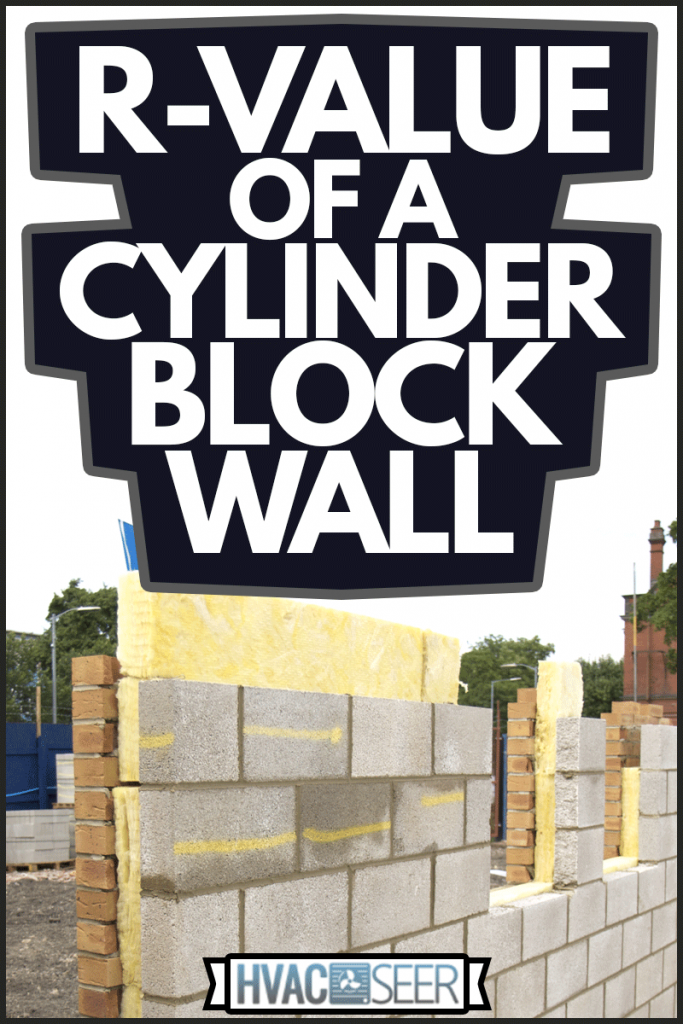
What is the R-Value of a Cinder Block Wall?
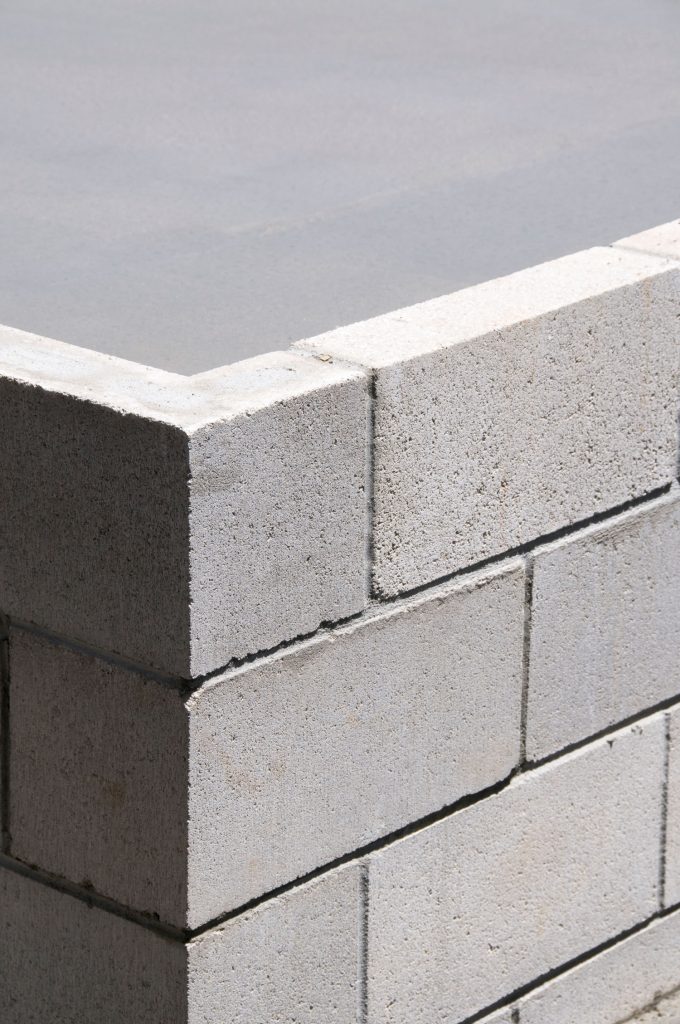
There is no doubt that cinder block walls are a durable alternative to other building methods. Although they cost less to maintain, they are significantly more expensive to build.
Cinder blocks alone contain an extremely low thermal resistance. Without the inclusion of additional materials, your wall will not be energy efficient.
The R-value, or thermal resistance, of a cinder block wall ranges between 1.9 and 2.5. This is not suitable for an exterior wall which should range in value between R-13 and R-23. However, there are ways to properly insulate block walls to make them more energy efficient.
How Do You Insulate a Cinder Block Wall?
The first step to insulating cinder block walls is to prevent air from entering. Once block walls settle, they are prone to shifting. This allows air to seep between the blocks.
To prevent this, you can use caulk below the top panel of the wall between the joists. Make sure to generously apply mortar between all cracks as well.
Insulated Cavities
Some people insert insulation through the opening at the top of the blocks. Although this is one solution, there is still a problem with this method.
Each block has a smooth end and a notched end. When you are applying mortar and adding cinder blocks, you will always need to connect the blocks with a smooth end touching a notched end.
However, this leaves an unseen opening between each block. Although the top and bottom are covered, air can still seep through the crevices between adjoining blocks. Therefore, the best way to insulate a cinder block wall is by injecting foam insulation into those cavities.
Watch this YouTube video as a demonstration of the process:
Interior Insulation
An exterior wall is the side you see from the outside of the house. The interior wall is the side of the wall you see from inside the home. Interior insulation simply refers to insulation that is applied to the interior wall. The insulation is attached to the masonry and covered with paneling or wallboard.
Exterior Insulation
Exterior insulation, as the name implies, is attached to the outside of the cinder block wall. This method requires a continuous piece of material.
Although exterior insulation takes away some of the home's aesthetic appeal by not allowing the concrete to be seen on the outside of the house, this method decreases thermal bridging. It is also beneficial because it allows the interior wall to stay in contact with the indoor heated and/or cooled air.
Integral Insulation
Using integral insulation will take up more space than other forms. This is because the insulation is situated between two layers of masonry walls.
This method is advantageous, however, providing extra thermal mass qualities. You will also benefit aesthetically because the masonry will be visible both inside and outside the home.
What Type of Insulation Do You Use for Cinder Block Walls?
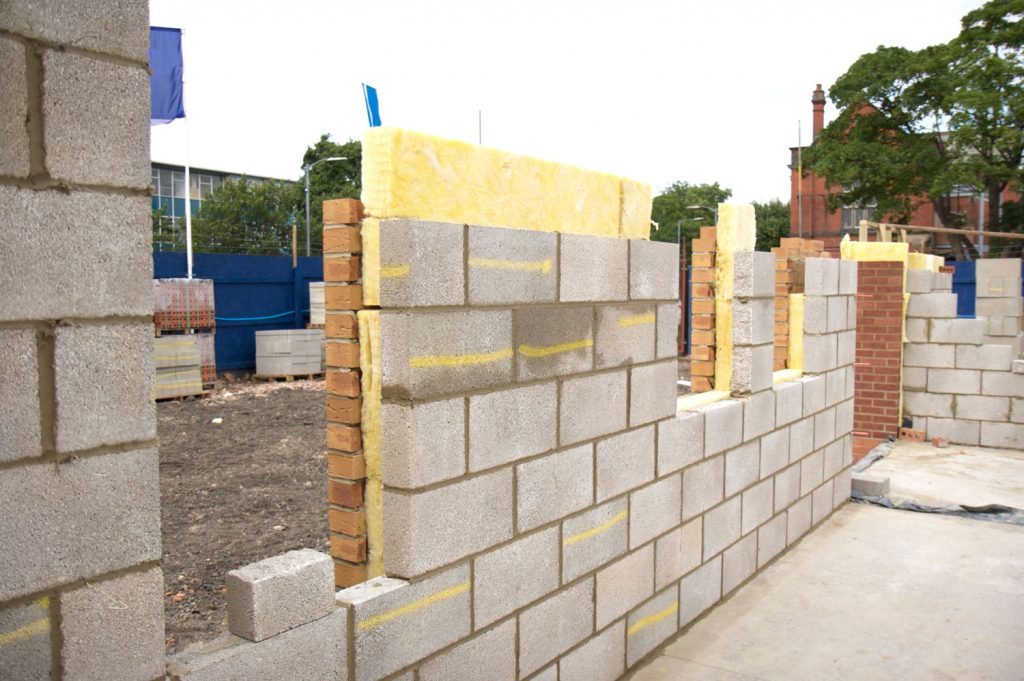
There are several different types of insulation you can use for cinder block walls. The type you choose will depend on your preferred insulation method.
Rigid Board
With rigid board insulation, you will need to glue the insulation in place while you attach fasteners and a protective finish. If you want moisture protection, you can use spacers to prevent the furring from coming into contact with the masonry. This also provides space for wiring and pipes.
Click here to see this rigid board insulation on Amazon.
Closed-Cell Spray Polyurethane Foam
Closed-cell spray polyurethane foam is typically used for interior walls with furring. The insulation goes in as liquid then expands as it turns to foam.
It is also resistant to air and water vapors. However, this type of insulation is more difficult to install if you are not trained and/or experienced. Therefore, if you are doing your own insulating, you should not attempt to apply spray foam insulation without first learning how to do so properly.
Click here to see this expanding polyurethane spray foam on Amazon.
Cellular Glass Insulation
Cellular glass is an extremely durable form of insulation. It is manufactured using 100% sealed glass cells and is highly lightweight. Cellular glass is also load bearing and fights against thermal bridging when used as one continuous piece. You'll also enjoy its water-resistant and non-combustible properties.
Fibrous Batt Insulation
Fibrous batt comes in a variety of materials which include the following:
- Fiberglass
- Natural fiber
- Plastic fiber
- Cellulose
- Mineral wool
Unlike other rigid forms of insulation, fibrous batt is flexible. Using convection, it traps air inside its fibers, preventing heat from seeping away. Although this type of insulation is not moisture or water resistant, it provides excellent soundproofing qualities.
Click here to see this fiberglass insulation on Amazon.
Fibrous Blown-In Insulation
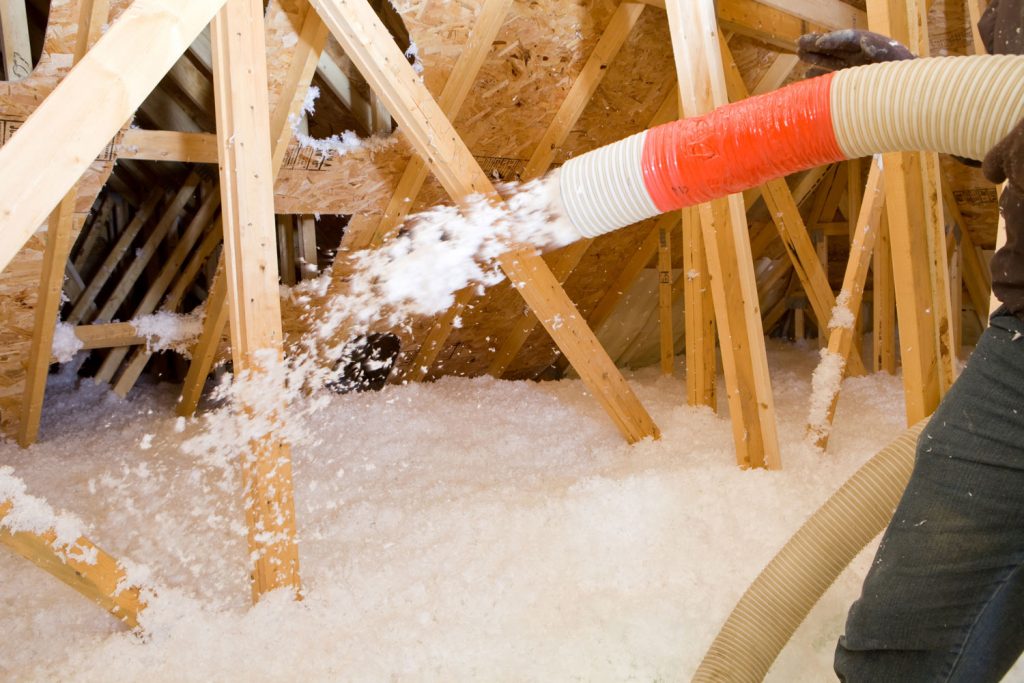
Although fibrous blown-in insulation is not as popular with cinder block walls, it can be done. If you are forming two walls with insulation in between, you can insert the blown-in insulation between the two structures.
The fibrous material used to create blown-in insulation comes from several different sources, although the installation method is the same for all types.
To install correctly, place the loose material into a blower and inject it into the open space between the walls. This type of insulation does have its disadvantages.
In addition to not being moisture resistant or fire resistant, the insulation begins to settle after some time, leaving a gap at the top of the wall and decreasing its R-value.
Granular Fills
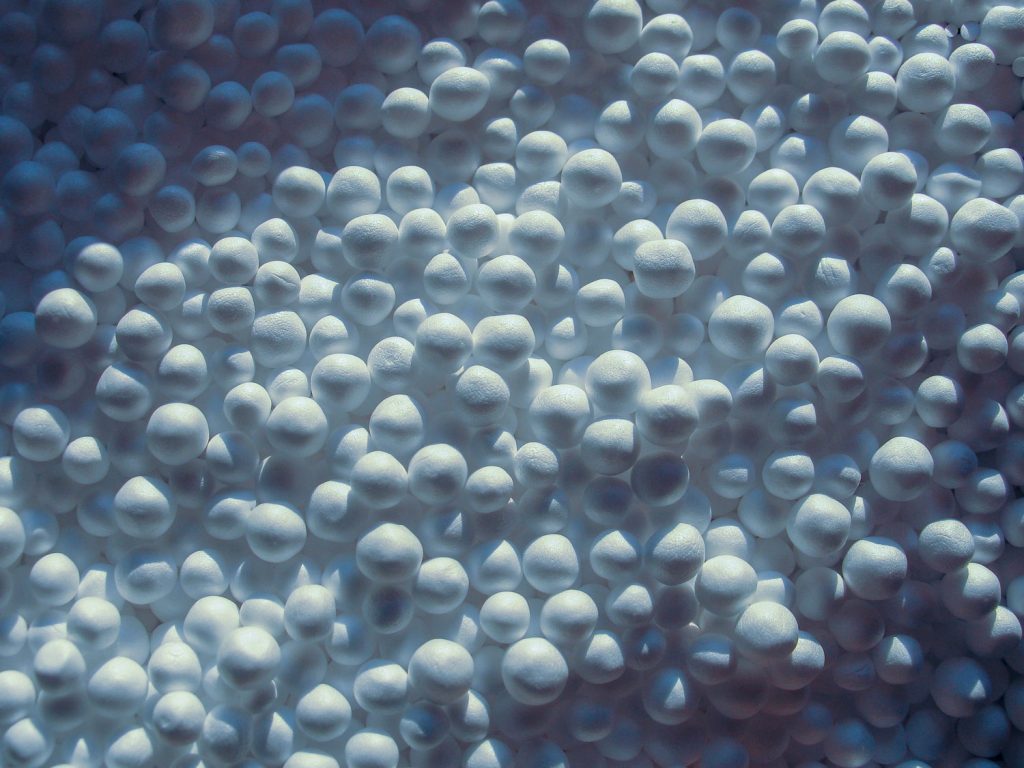
Granular fills are very similar to the stuffing that goes inside bean bag chairs. There are three materials of which these beads are made including perlite, vermiculite, and polystyrene. Granular fills are used primarily in cinder block walls.
For this method, you will fill the holes in the center of each block as you are building the wall. You won't need a blower or any special equipment for installation. Instead, you can pour the beads directly from the bag and into the blocks.
Asbestos Announcement
Don't panic when you think of vermiculite insulation. Although it was linked to asbestos in and prior to the year 1990, no vermiculite has been extracted from the contaminated mine since the danger was discovered.
Moisture Resistance
All three types of granular fills can be treated, making them less prone to water and moisture damage.
Vermiculite and perlite beads are not moisture resistant, but many manufacturers coat them with a treatment that helps prevent moisture retention. Polystyrene beads, on the other hand, are naturally moisture wicking.
Fire Resistance
Perlite and vermiculite have an advantage over polystyrene. Both possess exceptional fire-resistant properties. Contrarily, unless treated with a fire-resistant coating, polystyrene beads are deemed a fire hazard and do not hold up to many fire-safety codes.
Are Cinder Block Walls Energy Efficient?
If cinder block walls do not feature added insulation, they are not at all energy efficient. However, if you use any of the above types of insulation, it will add significantly to your wall's energy rating. In fact, when properly insulated, cinder block homes offer more energy conservation than traditionally-constructed homes.
Why are Houses Built with Cinder Blocks?
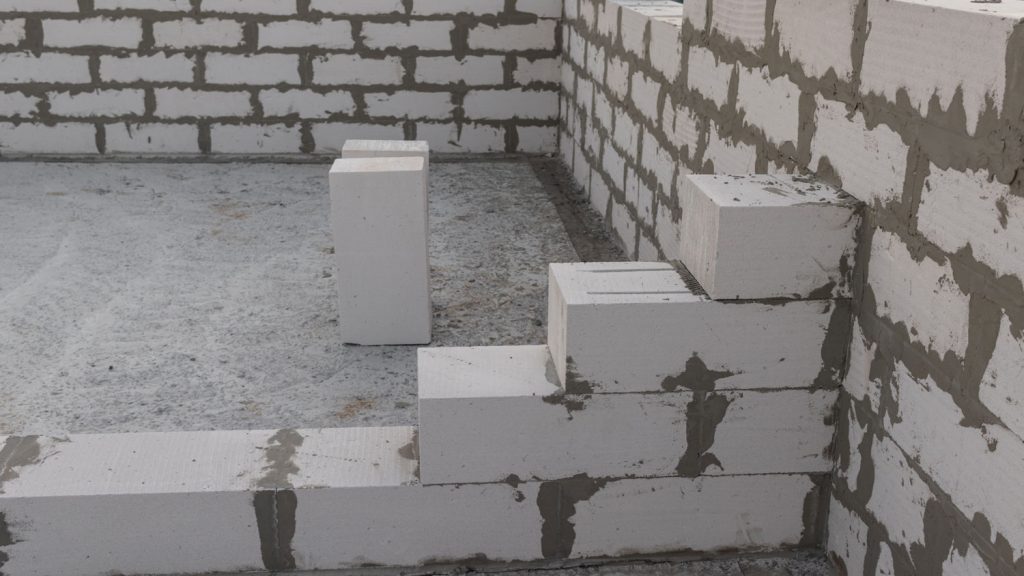
Although the notion may sound a bit odd, cinder block walls have a range of advantages. With the right contractor, your cinder block home can be very pleasing to the eye as well.
Fire Resistance
As you may have already guessed, masonry block houses are extremely resistant to fires. Although you are still at risk for internal fires, it will be difficult for the flames to completely engulf the home.
Noise Reduction
When equipped with the proper insulation and insulation method, cinder block walls will lower the noise level inside your home. Not only will you not have to endure commotion from people within your home but you will also be shielded from outside sounds created by traffic, construction, neighbors, and more.
Pest Resistance
Wood and other building materials attract pests such as termites and mice. However, concrete block homes do not provide a food source for such critters, and the walls are not as susceptible to crevices that mice like to call home.
Mold Resistance
Mold spores require a food source to thrive. This food source only consists of naturally-occurring materials. Since concrete is not a natural resource, it does not offer suitable living conditions for mold. Additionally, concrete blocks are moisture resistant, and mold spores must have moisture to survive.
In Closing
When you think of building a new home, concrete blocks may not come to mind. However, when equipped with the proper insulation, cinder block homes are more energy efficient than homes made of wood and other materials.
For this to be true, however, insulation is a must. Otherwise, your walls will have little to no thermal resistance.
For more information about insulation, check out these other posts:
How Thick Should Blown Insulation Be?



